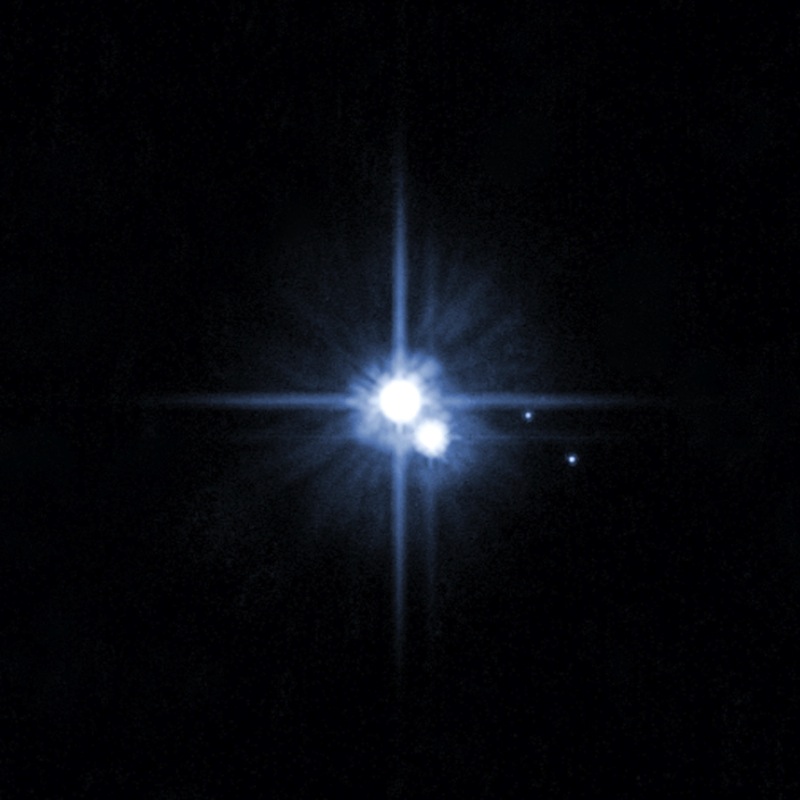
When it was first discovered, Pluto was the coolest planet in the solar system. Before it was even named, TIME surmised that “the New Planet,” 50 times farther from the sun than Earth, “gets so little heat from the sun that most substances of Earth would be frozen solid or into thick jellies.”
The astronomer Clyde W. Tombaugh, then a 24-year-old research assistant at the Lowell Observatory in Flagstaff, Ariz., was the first to find photographic evidence of a ninth planet on this day, Feb. 18, 85 years ago.
His discovery launched a worldwide scramble to name the frozen, farthest-away planet. Since the astronomer Percival Lowell had predicted its presence 15 years earlier, per TIME, and even calculated its approximate position based on the irregularity of Neptune’s orbit, the team at Lowell Observatory considered his widow’s suggestion of “Percival,” but found it not quite planetary enough. The director of the Harvard Observatory suggested “Cronos,” the sickle-wielding son of Uranus in Greek myth.
But the team opted instead for “Pluto,” the Roman god of the Underworld — the suggestion of an 11-year-old British schoolgirl who told the BBC she was enthralled with Greek and Roman mythology. Her grandfather had read to her from the newspaper about the planet’s discovery, and when she proposed the name, he was so taken with it that he brought it to the attention of a friend who happened to be an astronomy professor at Oxford University. The Lowell team went for Pluto partly because it began with Percival Lowell’s initials.
Pluto the Disney dog, it should be noted, had nothing to do with the girl’s choice. Although the cartoon character also made its first appearance in 1930, it did so shortly after the planet was named, as the BBC noted.
And while Pluto was downgraded to “dwarf planet” status in 2006, it remains a popular subject for astronomers. They began discovering similar small, icy bodies during the 1990s in the same region of the solar system, which has become known as the Kuiper Belt. Just because Pluto’s not alone doesn’t make it any less fascinating, according to Alan Stern, director of a NASA mission, New Horizons, that will explore and photograph Pluto in an unprecedented spacecraft flyby on July 14 of this year.
“This epic journey is very much the Everest of planetary exploration,” Stern wrote in TIME last month. “Pluto was the first of many small planets discovered out there, and it is still both the brightest and the largest one known.”
NASA released its first images of Pluto from the New Horizons mission earlier this month, although the probe was still 126 million miles away from its subject; the release was timed to coincide with Tombaugh’s birthday. Stern wrote, when the pictures were released, “These images of Pluto, clearly brighter and closer than those New Horizons took last July from twice as far away, represent our first steps at turning the pinpoint of light Clyde saw in the telescopes at Lowell Observatory 85 years ago, into a planet before the eyes of the world this summer.”
Read TIME’s original coverage of how Pluto got its name, here in the archives: Percival? Cronos?
More Must-Reads from TIME
- Donald Trump Is TIME's 2024 Person of the Year
- Why We Chose Trump as Person of the Year
- Is Intermittent Fasting Good or Bad for You?
- The 100 Must-Read Books of 2024
- The 20 Best Christmas TV Episodes
- Column: If Optimism Feels Ridiculous Now, Try Hope
- The Future of Climate Action Is Trade Policy
- Merle Bombardieri Is Helping People Make the Baby Decision
Contact us at letters@time.com